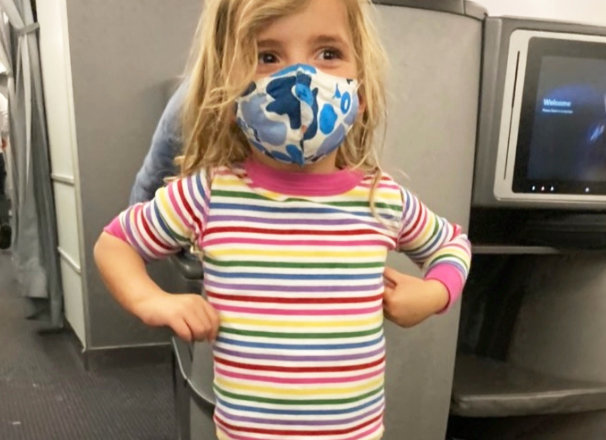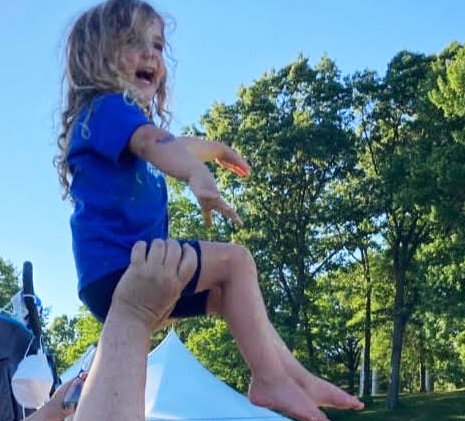Bodies are cool
A heart-warming story about a zipper, a power pack, and some questions
Asking for help requires a similar kind of openness and trust. It is difficult, sometimes, to admit that you need help. Our current health care system needs help at the moment or, more accurately, the patients being cared for need more help than is currently being provided. What’s required is not well crafted phrases by communications professionals shaping the narratives – but honesty from our elected leaders, such as Sen. Josh Miller, who said recently, in support of new legislation to invest in housing for the homeless: “Getting people into housing removes the burden of finding shelter and allows for the freedom to get connected with programs and employment opportunities, while directly engaging in the most preventative care mechanism we have, a roof.”
WELLFLEET, Mass. – Our granddaughter Shirley will be turning five in a few months. She was born with two serious heart conditions, one of which was detected at the beginning of our daughter’s third trimester.
At 8 hours old, Shirley underwent her first cardiac surgery which involved giving her a pacemaker, placed in her abdomen. Her teeny, newborn chest had a long, vertical incision, which soon became a scar. That scar faded over time.
Many heart families refer to these scars as “zippers,” which everyone seems to understand, the kids included. Although seemingly benign, the word also implies that it’s something that can open often. So, not so benign.
At age 2 years 4 months, Shirley underwent another cardiac surgery so her faded scar was now replaced with a fresh “zipper.” This time an internal defibrillator/pacemaker was implanted in her abdomen. The defibrillator, called an Implantable Cardioverter Defibrillator [ICD], detects heart arrhythmias and gives Shirley a shock to put her heart rhythm back to normal.
Fortunate and grateful
Our family is fortunate and grateful that Shirley is being cared for at one of the best teaching hospitals in the world. Other outstanding hospitals also have been involved in conferences about her care. Shirley’s medical team continues to be approachable, calm, caring and always available. Via teleconferences, Peter and I have been included in many of Shirley’s appointments and meetings about her care and treatments. And they always encourage all of us to treat her like any “normal kid.”
Last summer, at age 4, when Shirley was staying with us, she came in to my bedroom one morning. She pointed to her ICD, which protrudes from one side of her abdomen. It looks like she swallowed a hockey puck.
“What is this?” she asked pointing to it. This was the first time she had asked me about it and as it turned out, she hadn’t yet talked about it at all.
Recently a “heart mom” friend via social media had used a phrase with her young daughter to describe the ICD. I liked the phrase, so I told Shirley it was her “Power Pack” and it was there to make her heart extra strong.
She liked the answer but several other questions followed: “I only have one?” “How did it get there?” “Who put it there?” “Does Ray [her big sister] have one?”
And finally, “So it’s only mine, right?” When I said yes, Shirley said, “Good, so no one can take it away from me” – a rather realistic response from someone still learning to share.
Our bodies, ourselves
Last fall I found a book at my son’s house, a book that his wife had recently bought for their daughter, who is six months younger than Shirley. The book is called Bodies Are Cool by Tyler Feder. It’s a cheerful, love-your-body picture book that has beautiful illustrations of all the different types of bodies in various skin tones, body shapes and hair types.
Then I saw the illustration of a young child who had a vertical scar, a “zipper” on their chest. We hear repeatedly that representation matters. It certainly clicked for me. Perhaps other books address this for pre-school kids but it was the first time I’d ever seen such a body-positive and inclusive depiction.
Recently Shirley has wanted her mother to read her Bodies Are Cool every night before bed. Every night. She loves the book and recognizes herself in the picture with the “zipper.”
And, she’s also trying to figure out her “power pack” and exactly what powers it possesses.
There will be more questions that Shirley has about her heart. Many more, and they won’t always be easy conversations with answers that satisfy her curiosity, her sense of self and her need to know. The answers will bring on more questions and more difficult discussions.
Fortunately, Shirley chose her parents well, and they will continue to do right by her.
Toby Simon is a frequent contributor to ConvergenceRI.







